Lead
- Lead Home
- Common Sources of Lead
- Contractor Information
- Educational Materials
- Factsheets and Brochures
- Find a Contractor or Consultant
- Look-up Individual Lead Licenses
- Lead Licensing
- Health Care Professionals
- Home Owner Information
- Laws and Rules
- Rule Revision: Lead Laws and Rules
- Lead in Schools
- Lead Resources
- Lead Reports
- M-CLEAN
- File a Complaint Related to Lead
- Lead Contacts
Related Sites
- Birth Defects Monitoring and Analysis
- Children's Environmental Health
- DWP Fact Sheets
- Individual and Family Health
- Family Planning
- Lead in Well Water
- Nutrition: Healthy Eating
Environmental Health Division
Hiring a Contractor
On this page:
Renovation/remodeling
Lead abatement

Every year, millions of people hire a contractor to renovate their home. Many of these homes were built before 1978 and may be painted with lead paint. During the renovation process, lead paint chips, dust and debris can be generated, which poses a health hazard to children and adults living in the home. You can minimize the dangers of lead exposure and protect your family's health by hiring a Lead Safe Certified Renovator.
Renovation/remodeling
How to hire the right contractor to do work in your home
When hiring a contractor, knowing more about them may help you make a more informed decision. Here are some questions to ask before hiring a renovation contractor:
Are you certified by the EPA as a Lead-Safe Renovator?
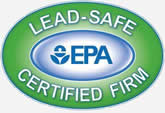
Federal law requires that all contractors be certified to perform renovation work in pre-1978 single-family residences and multi-residential buildings where the quantity of lead paint being disturbed is greater than six square feet per room on the interior of a residence or 20 square feet on the exterior of the residence. Request a copy of their certification or verify their license through the EPA's Lead-based Paint Professional Locator.
How much will the renovation cost and what does the cost include?
The costs associated with home renovations can vary based on the size and complexity of the project. Costs should include labor and waste disposal.
Can you provide references from customers you have done similar work for?
The contractor should be able to provide you with several references. You should select at least three of the references you would like to contact. Ask former customers if they were satisfied with the quality of the work and whether or not the contractor completed the project as agreed upon.
Additional information to request from the contractor
It is recommended that you obtain bids from more than one contractor, rather than accepting a single bid from one contractor. Be sure to describe the project to each contractor in exactly the same terms, so you can compare bids. Ask each contractor to include a listing of all associated costs such as labor, materials, insurance, bonding, and lead waste disposal fees. A contractor who comes to your home to look at the anticipated work will give you the most realistic bid.
You may also want to request:
- A copy of their EPA Lead Safe Renovator certification.
- A copy of the individual's renovator training certificate who will be overseeing the project.
Why do I need to hire a Lead Safe Certified Renovator to do work in my home?
If you live in an older building, there might be lead in your home that can be dislodged during the renovation process. Contractors who are Lead Safe Certified by the EPA will follow specific work practices to prevent the hazards of lead exposure to protect your family's health, such as:
- Establish a work area to contain lead dust
- Minimize and control lead dust while working
- Clean up thoroughly after the work is completed
- Check the work area to make sure no lead dust remains.
Minimizing your exposure to lead is crucial to prevent side effects in children such as:
- Delayed mental development, memory and concentration problems
- Shortened attention span, aggressive behavior
- Hearing loss
Adults can also experience lead poisoning, with side effects such as:
- High blood pressure, kidney damage, digestive problems, muscle and joint pain
- Fertility problems, harm to a developing fetus
How will they do the work?
Prior to beginning the renovation, have the contractor explain to you how the work area will be set up. Have them explain how they are going to ensure that dust doesn't leave the work area. Here is a short list of what you should see before and during the renovation project:
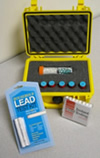 | The renovator must either check to see if there is lead paint present by using an EPA approved test kit, or must assume the paint is lead paint. Paint chip sampling may only be done by an MDH licensed paint inspector or risk assessor. |
 | The contractor must provide you with the “Renovate Right” booklet. |
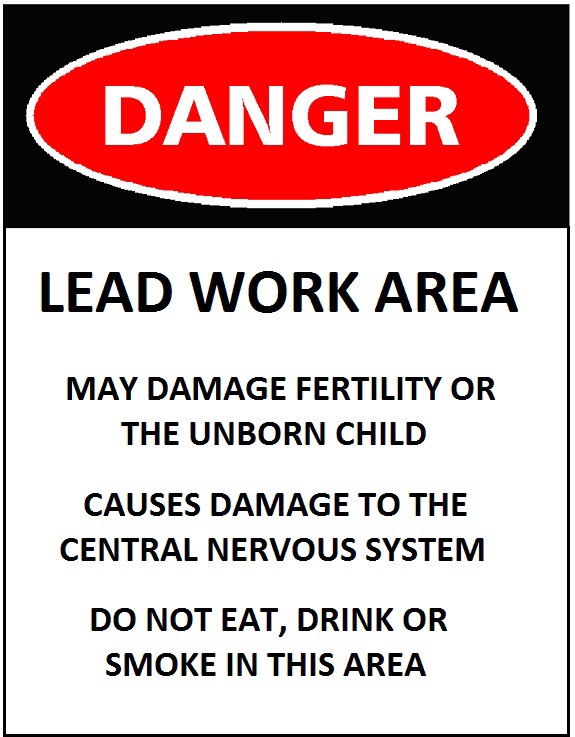 | Lead warning signs must be posted around the work area. |
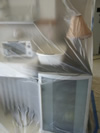 | All moveable objects, like furniture, toys, window treatments, etc. must be removed from the work area. All non-movable objects must be covered. |
 | All heating/air conditioning duct openings in the work area must be sealed with plastic. |
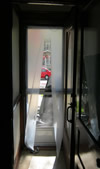 | Doorways entering the work area must have plastic sheeting covering them to prevent the spread of dust. |
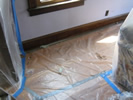 | The floor of the work area must have plastic sheeting that extends at least 6 feet out from the area where the renovation is occurring. |
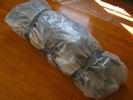 | Painted building components taken out of the work area must be wrapped in plastic or in sealed plastic bags. |
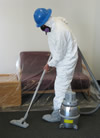 | At the conclusion of the renovation, the walls and floors of the work area must be cleaned by wet wiping or using a HEPA vacuum. |
 | When the job is finished, the trained renovator must conduct a cleaning verification using an official EPA cleaning verification card. |
Go to > top
Lead abatement
Sometimes lead-safe renovation isn't enough. Some people aren't looking to simply renovate their property, they want to make it lead safe by permanently removing lead hazards from their property. Or a local housing agency is requiring that the lead paint be removed from a property. Sometimes a property has received a Lead Order from the Minnesota Department of Health (MDH) or a local public health agency requiring the removal of lead hazards to protect a child or pregnant woman living in the property. This is when lead abatement is conducted.
How do I hire a lead abatement contractor to do work in my home?
As when hiring lead abatement contractor, the more information you have about a contractor may help you make a more informed decision when it comes to hiring one. The following are some additional questions you should ask before hiring a lead abatement contractor:
Are you certified by MDH as a Lead Contractor?
Minnesota law requires that all contractors be certified to perform lead abatement in pre-1978 single-family residences and multi-residential buildings where the quantity of lead paint being disturbed is greater than two square on the interior of a residence or 20 square feet on the exterior of the residence.
Is there other information I should request from the contractor?
It is recommended that you obtain bids from more than one contractor, rather than accepting a single bid from one contractor. Be sure to describe the project to each contractor in exactly the same terms, so you can compare bids. Ask each contractor to include a listing of all associated costs such as labor, materials, insurance, bonding, and lead waste disposal fees. A contractor who comes to your home to look at the anticipated work will give you the most realistic bid.
Additional information to request:
- MDH lead contractor’s certification.
- MDH licenses for lead supervisors and workers at the site.
- The notification provided to MDH.
- Waste manifest records.
- Lead clearance inspection report.
How will they do the work?
Prior to beginning the lead abatement, have the contractor explain to you how the work area will be set up. Have them explain how they are going to make sure that dust doesn’t leave the work area.
Here is a short list of what you should see before and during the lead abatement project:
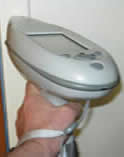 | A paint inspector or risk assessor must test to see if there is lead paint present by either using an XRF machine or paint chip sampling, or the paint must be assumed to be lead paint. |
 | Contractor must notify MDH. Ask to see the notification. |
 | Lead warning signs must be posted around the work area. |
 | All moveable objects, like furniture, toys, window treatments, etc. must be removed from the work area. All non-movable objects must be covered. |
 | All heating/air conditioning duct openings in the work area must be sealed with plastic. |
 | Doorways entering the work area must have plastic sheeting covering them to prevent the spread of dust. |
 | The entire floor of the work area must be covered with plastic sheeting. |
 | Painted building components taken out of the work area must be wrapped in plastic or in sealed plastic bags. |
 | At the conclusion of the lead abatement, the work area must be cleaned by wet wiping or using a HEPA vacuum. |
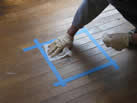 | When the job is finished, a lead inspector or lead risk assessor must conduct a dust wipe clearance and send the samples to a laboratory for analysis. |
Go to > top
How do I get more information?
For more information about lead, contact the Lead Program at MDH through the internet or by telephone at (651) 201-4620.
The Minnesota Department of Commerce provides consumer information and services as well as contractor licensing and enforcement actions. They can be contacted at (651)-296-4026 or through the internet for further information.
The Better Business Bureau has information regarding business practices or consumer praise/complaints about an lead contractor. They can be contacted at (651) 699-1111 or through the internet for further information.
If you have complaints regarding the RRP regulations, you can Report the Environmental Violation to the EPA or call them at 1-800-424-LEAD (5323).
Go to > top